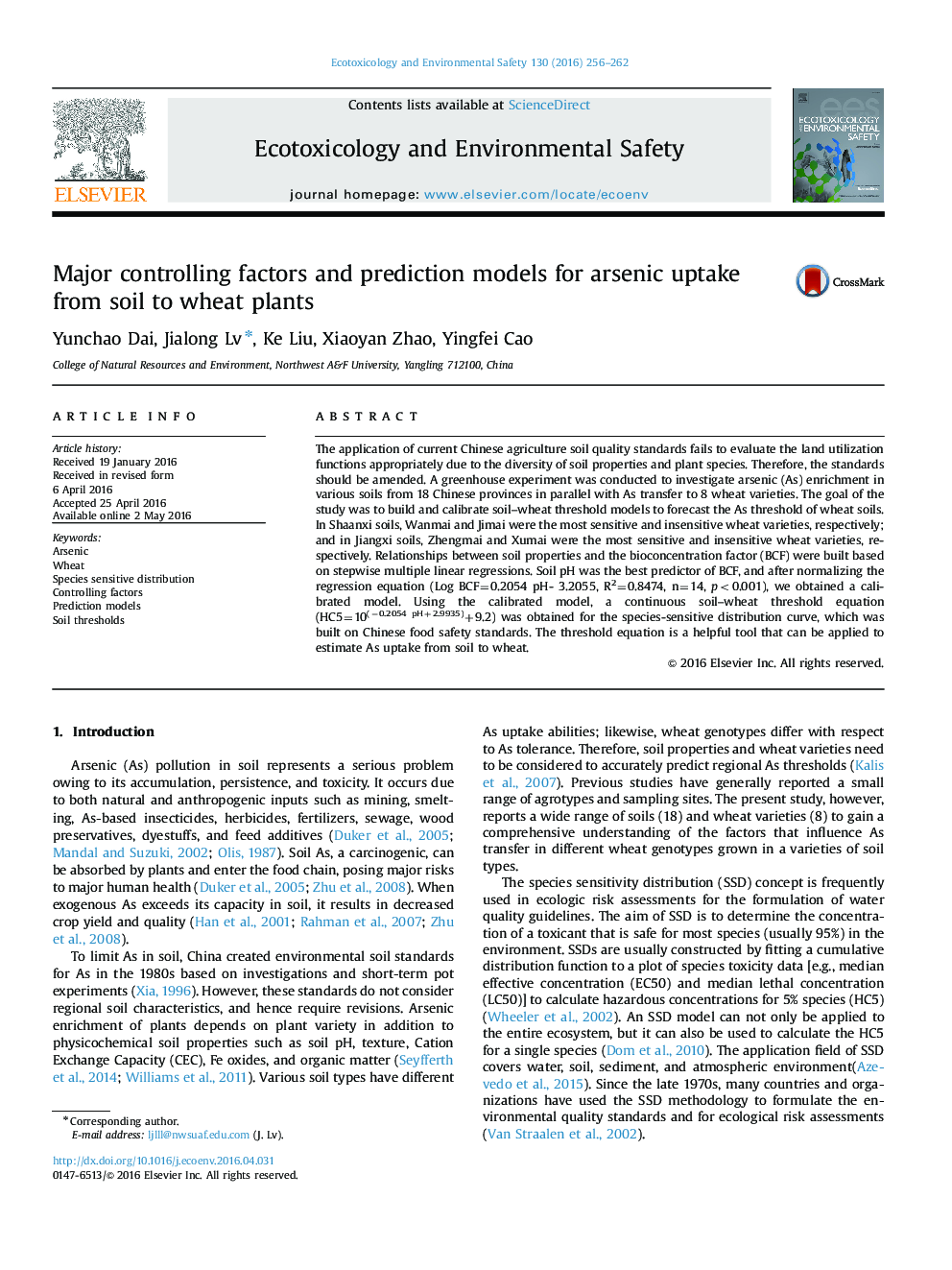| کد مقاله | کد نشریه | سال انتشار | مقاله انگلیسی | نسخه تمام متن |
|---|---|---|---|---|
| 4419199 | 1618933 | 2016 | 7 صفحه PDF | دانلود رایگان |
• A wide range of Chinese soils and wheat varieties were used to detect BCF.
• The soil threshold can be back-calculated from the food standards.
• The toxicology data was normalized during the process of constructing SSD curve.
• The calculation of HC5 was based on cumulative distribution function.
The application of current Chinese agriculture soil quality standards fails to evaluate the land utilization functions appropriately due to the diversity of soil properties and plant species. Therefore, the standards should be amended. A greenhouse experiment was conducted to investigate arsenic (As) enrichment in various soils from 18 Chinese provinces in parallel with As transfer to 8 wheat varieties. The goal of the study was to build and calibrate soil–wheat threshold models to forecast the As threshold of wheat soils. In Shaanxi soils, Wanmai and Jimai were the most sensitive and insensitive wheat varieties, respectively; and in Jiangxi soils, Zhengmai and Xumai were the most sensitive and insensitive wheat varieties, respectively. Relationships between soil properties and the bioconcentration factor (BCF) were built based on stepwise multiple linear regressions. Soil pH was the best predictor of BCF, and after normalizing the regression equation (Log BCF=0.2054 pH- 3.2055, R2=0.8474, n=14, p<0.001), we obtained a calibrated model. Using the calibrated model, a continuous soil–wheat threshold equation (HC5=10(−0.2054 pH+2.9935)+9.2) was obtained for the species-sensitive distribution curve, which was built on Chinese food safety standards. The threshold equation is a helpful tool that can be applied to estimate As uptake from soil to wheat.
Journal: Ecotoxicology and Environmental Safety - Volume 130, August 2016, Pages 256–262
